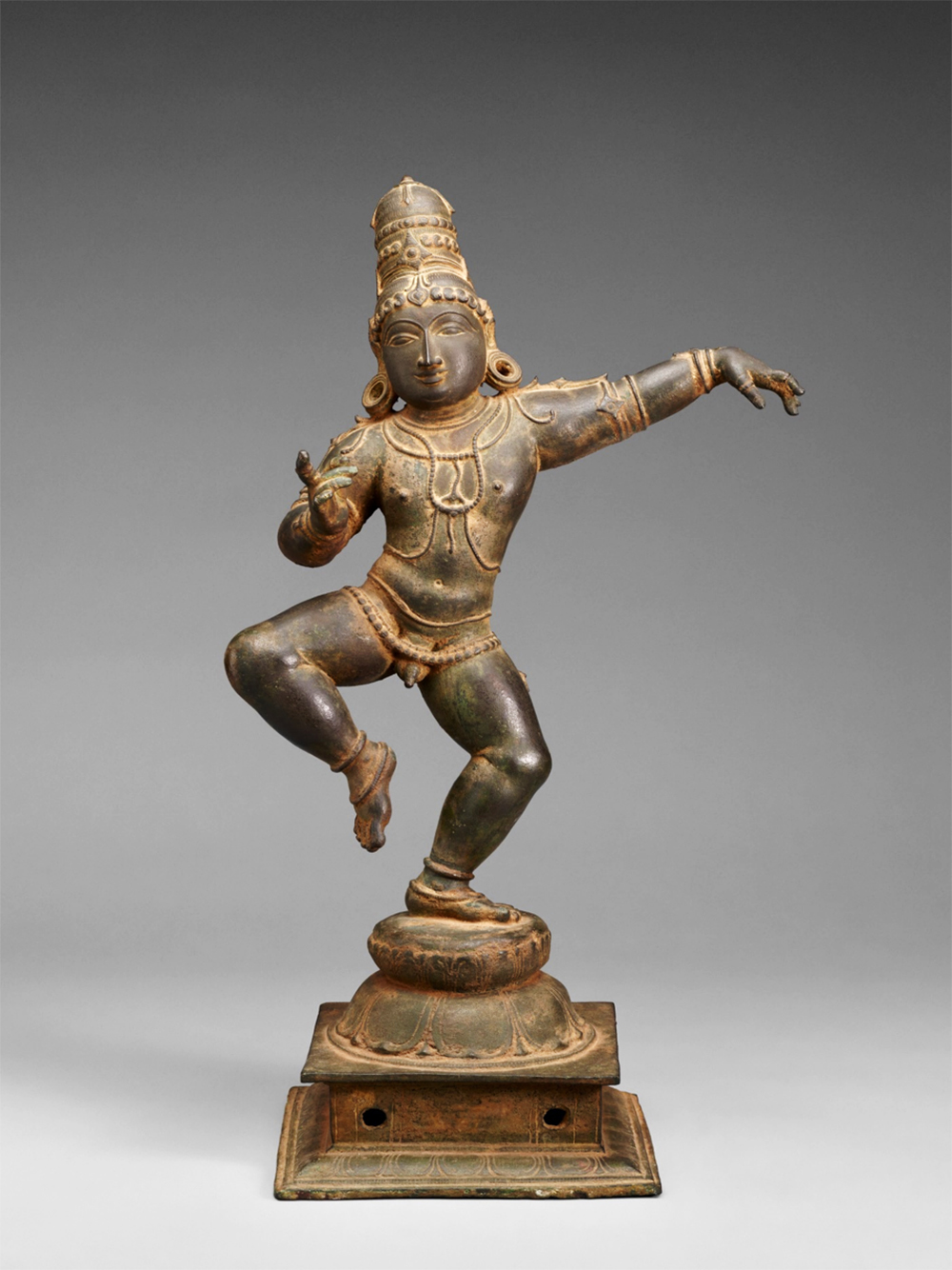
The Poet-Saint Sambandar, 1200–1400, India; Tamil Nadu, bronze, Asian Art Museum of San Francisco, The Avery Brundage Collection, B60B1016
Hello, my name is Anu Mitra. I am docent at the Cincinnati Art Museum. I will be reading the Devotion section of Beyond Bollywood: 2000 Years of Dance in Art.
Devotional dance represents the reunification of opposites, the transcending of dualities, and the achievement of ultimate oneness. These states of achievement resonate with many forms of Buddhist, Hindu, and sometimes Muslim thought. Such religious adoration is often expressed through rhythmic motion and organized postures that create a connection between earthly and divine realms.
The mutual love and longing of god and devotee, or bhakti—a relationship so intimate and emotional that it is akin to conjugal love—is often explored through dance. In recent centuries, the religious and spiritual importance of bhakti has increased; it has become a central aspect of worship practices and directs how people live their lives. The most frequent depiction of dance and bhakti devotion comes from a Hindu context, one that imparts the significant role of music, dance, and drama in the widespread circulation of religious beliefs. This is the circle dance of Krishna and a group of cowherder women who dance together in divine bliss. Krishna, an incarnation of the Hindu god Vishnu, lives in a village and is indistinguishable from the other young male cowherders except for his strength, cleverness, and beauty. One night he goes deep into the forest and plays his flute; his music is irresistible to the cowherder women, who abandon their families and rush to join him. They dance a dance of connection that enthralls the senses and transcends earthly bonds.
